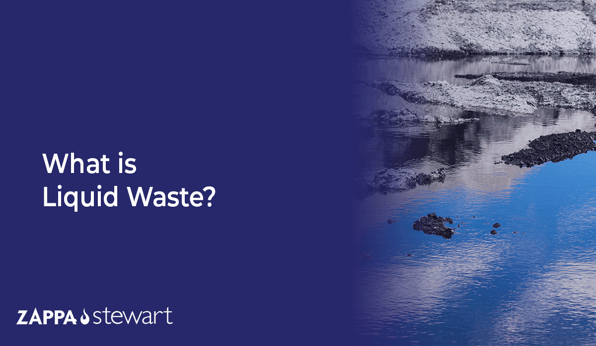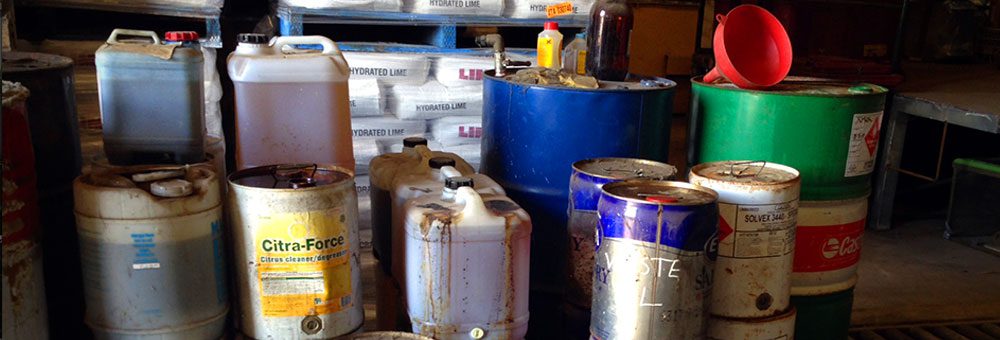Cutting-edge Industrial Wastewater Treatment Solutions: Safeguarding the Setting
Cutting-edge Industrial Wastewater Treatment Solutions: Safeguarding the Setting
Blog Article
Understanding the Comprehensive Process of Fluid Garbage Disposal: Finest Practices and Environmental Effect Considerations
The management of liquid waste disposal is a complex problem that requires a detailed understanding of various ideal methods and their associated environmental impacts. From the sorts of liquid waste generated to the approaches employed for collection, therapy, and final disposal, each step plays a crucial role in protecting ecosystems and public health and wellness. As regulatory criteria evolve and technology advances, the discussion around these procedures ends up being significantly relevant. What effects do these adjustments hold for future sustainability initiatives, and exactly how can stakeholders make sure that they are adequately resolved?
Kinds of Fluid Waste
Comprehending the various kinds of liquid waste is essential for efficient management and disposal practices. Liquid waste can be extensively categorized into several kinds, each needing one-of-a-kind handling and therapy approaches.
Industrial fluid waste often contains unsafe materials, consisting of heavy steels, solvents, and chemicals, created throughout producing procedures. These wastes necessitate stringent regulative compliance to shield human health and wellness and the environment. Residential fluid waste mainly describes wastewater generated from families, including sewage and greywater, which, although less poisonous, can still pose substantial threats if poorly taken care of.
Agricultural fluid waste, consisting of overflow from farms, usually consists of plant foods and chemicals that can cause ecological degradation if not dealt with properly. Medical fluid waste, created from medical care facilities, consists of polluted liquids such as physical liquids and chemicals, calling for specialized disposal techniques to avoid infection and ecological contamination.
Lastly, oil and oil waste, typically generated by dining establishments and automotive industries, can trigger extreme obstructions in sewer systems if not handled appropriately. Understanding these categories facilitates targeted approaches for therapy, compliance with regulations, and effective disposal techniques, ultimately advertising environmental sustainability and public wellness safety.

Collection Techniques
Efficient collection approaches are crucial for the appropriate management of liquid waste, making sure that it is gathered securely and effectively prior to therapy or disposal. Numerous methods are utilized depending upon the kind of fluid waste created, the quantity, and the details attributes of the waste.
One common method is using devoted collection containers or sumps, which are created to record liquid waste at the resource. These systems commonly incorporate pumps that facilitate the transfer of waste to bigger storage containers or therapy centers. Additionally, mobile collection units outfitted with vacuum modern technology are utilized in situations where waste is produced intermittently or in hard-to-reach locations.
For commercial settings, closed-loop systems can effectively minimize spills and leaks, enabling the healing and reuse of fluid waste. It is additionally important to educate workers on proper collection procedures to reduce threats related to dangerous substances.
Moreover, applying normal maintenance schedules for collection equipment ensures ideal performance and security. The combination of advanced monitoring systems can enhance collection performance by offering real-time data on waste levels and potential dangers. Generally, effective collection techniques are fundamental to lasting fluid waste administration practices.
Treatment Procedures
Treatment procedures play an important function in the monitoring of fluid waste, changing possibly harmful materials right into secure effluents or recyclable sources - liquid waste disposal. These procedures can be broadly classified into physical, chemical, and biological techniques, each tailored to deal with certain pollutants existing in the waste stream
Physical therapy techniques, such as sedimentation and filtering, work by removing suspended solids and particle matter. These methods are commonly the very first step in the treatment chain, efficiently decreasing the tons on subsequent processes. Chemical treatments include the use of reagents to counteract unsafe compounds, precipitate heavy metals, or oxidize natural toxins, therefore improving the safety of the effluent.
Biological therapy processes, consisting of triggered sludge systems and anaerobic food digestion, take advantage of the all-natural capabilities of microorganisms to deteriorate natural issue. These methods are specifically reliable for wastewater consisting of biodegradable contaminants. Advanced therapy modern technologies, such as membrane purification and progressed oxidation processes, are increasingly utilized to attain higher degrees of purification.
Integrating a mix of these therapy techniques not only guarantees conformity with governing requirements however likewise advertises ecological sustainability by recuperating beneficial sources from fluid waste.
Disposal Options
How can companies make certain the safe and liable disposal of fluid waste? Effective disposal choices are critical for protecting public health and wellness and the setting. The key methods include land incineration, disposal, and therapy complied with by discharge right into local wastewater systems.
Land disposal involves the mindful containment of fluid waste in assigned land fills, making certain that it does not leach into bordering dirt or water. Incineration, on the other hand, subjects liquid waste to high temperatures, transforming it into ash and gases, which require correct filtration to reduce discharges. This technique is appropriate for harmful wastes that can not be dealt with with typical ways.
In instances where fluid waste can be treated, organizations might go with chemical or organic treatment procedures to neutralize harmful elements before discharging the treated effluent right into local systems. This route usually aligns with regulative demands, ensuring that the effluent fulfills safety and security criteria.
Ultimately, organizations need to conduct comprehensive analyses of each disposal option to identify its viability, taking into consideration variables such as waste composition, regulatory compliance, and prospective threats to health and wellness and the setting. By picking suitable disposal techniques, organizations can add to a liable waste management strategy.
Environmental Impact
The ecological impact of fluid waste disposal is a vital consideration for organizations looking for to lessen their environmental footprint. In addition, the discharge of neglected or improperly dealt with waste right into surface area waters can result in eutrophication, leading to oxygen exhaustion and the subsequent death of fish and other organisms.

To reduce these influences, companies must embrace ideal methods such as implementing extensive waste treatment procedures, advertising recycling and reuse, and sticking to regulatory standards. By taking an aggressive approach to liquid waste management, entities can considerably lower their environmental footprint while supporting sustainable development goals. Eventually, a comprehensive understanding of the ecological influences related to liquid waste disposal is vital for notified decision-making and liable stewardship of natural resources.
Conclusion
Efficient administration of liquid waste is vital for protecting environmental stability and public wellness. By embracing best techniques in disposal, collection, and therapy, alongside adherence to governing standards, the capacity for harmful contamination of communities can be substantially decreased. Continuous developments in innovation and procedures add to lasting waste management efforts. Eventually, liquid waste removal melbourne a thorough understanding of fluid waste disposal not only mitigates ecological impacts however additionally promotes a dedication to responsible source administration and ecological stewardship.
The administration of fluid waste disposal is a diverse problem that requires a thorough understanding of numerous best practices and their associated ecological influences. From the kinds of liquid waste created to the methods employed for collection, treatment, and final disposal, each step plays a critical role in protecting environments and public health.The environmental influence of fluid waste disposal is a crucial factor to consider for companies looking for to minimize their eco-friendly footprint. Eventually, an extensive understanding of the environmental influences associated with fluid waste disposal is necessary for informed decision-making and responsible stewardship of natural sources.
Eventually, a thorough understanding of fluid waste disposal not only alleviates environmental impacts however additionally promotes a commitment to responsible source management and environmental stewardship.
Report this page